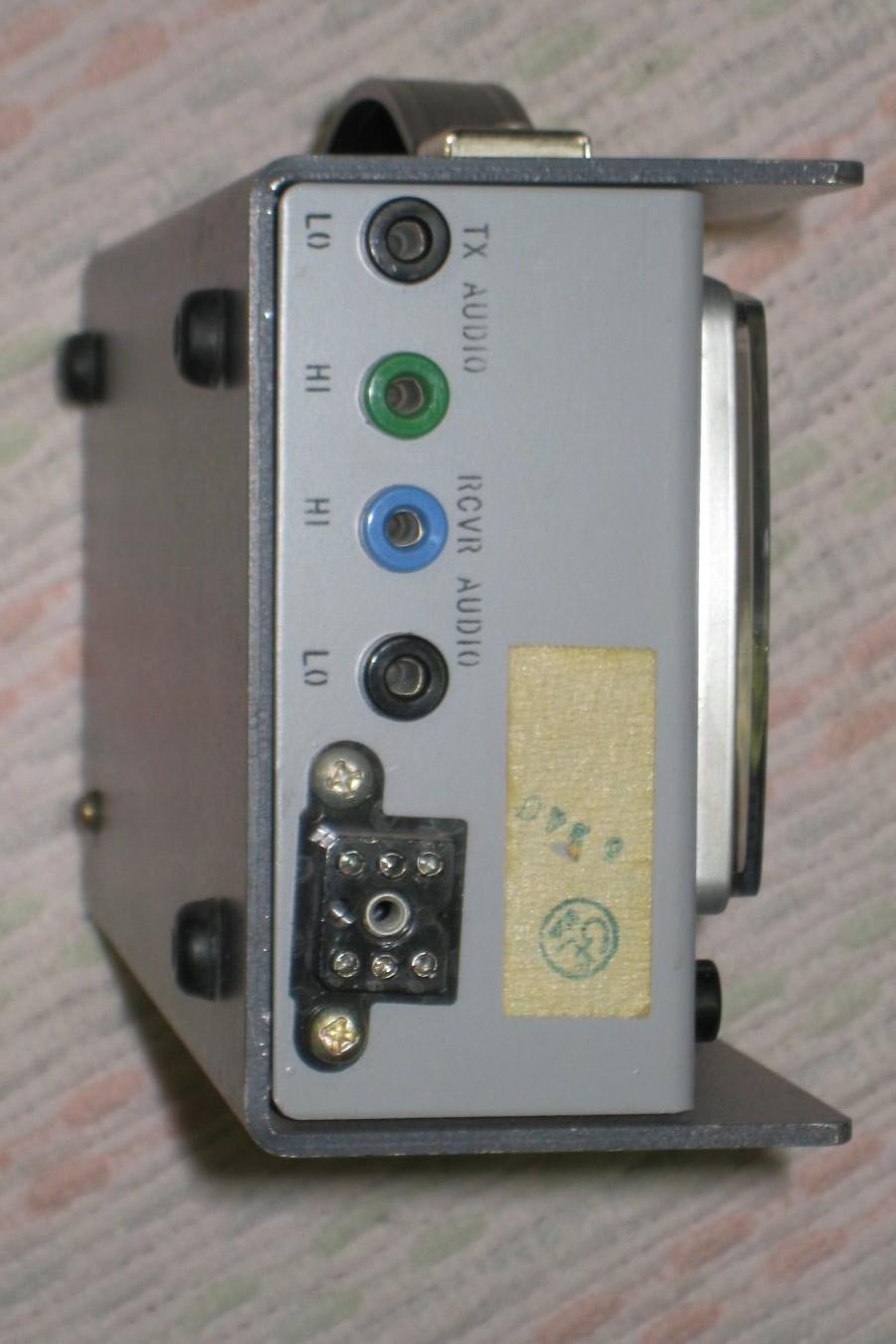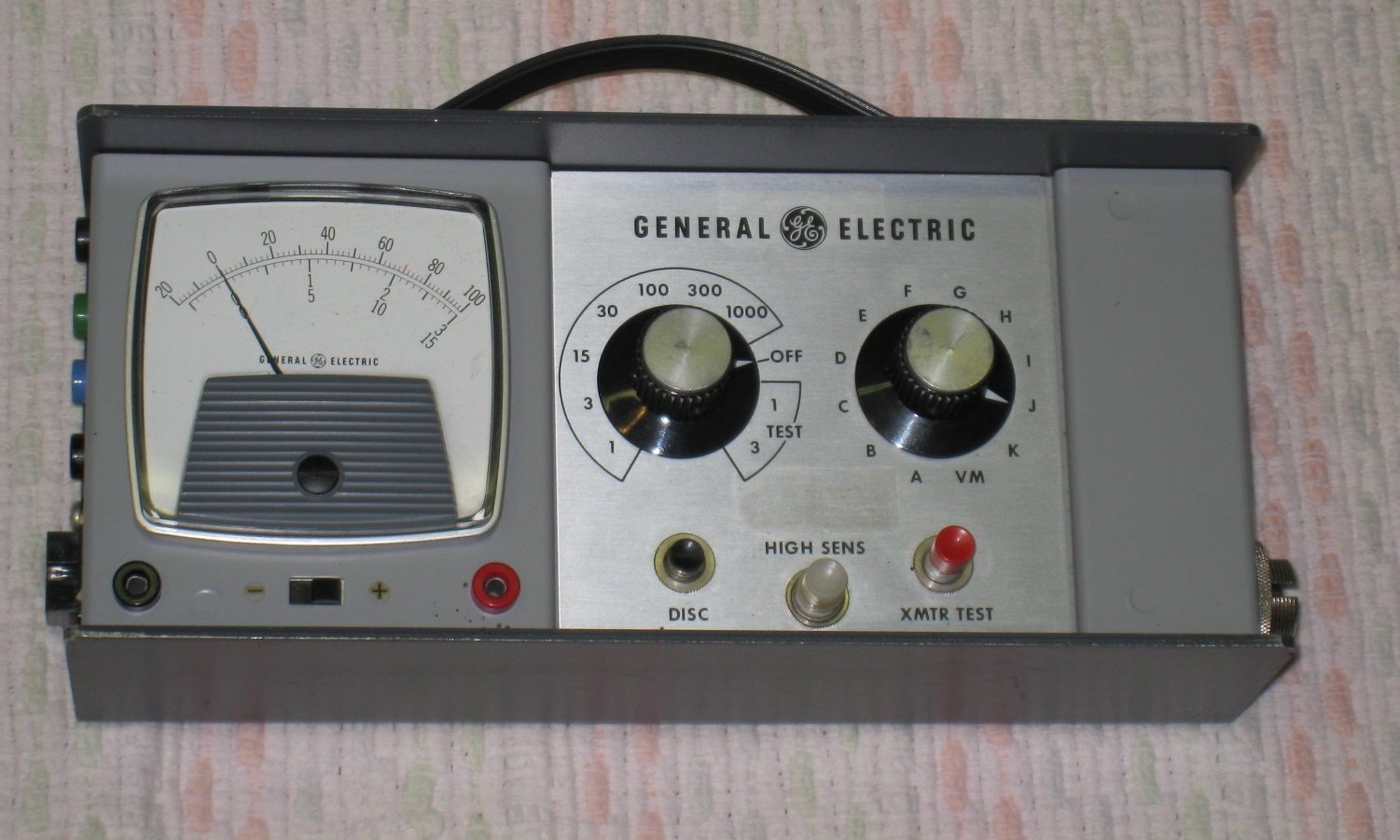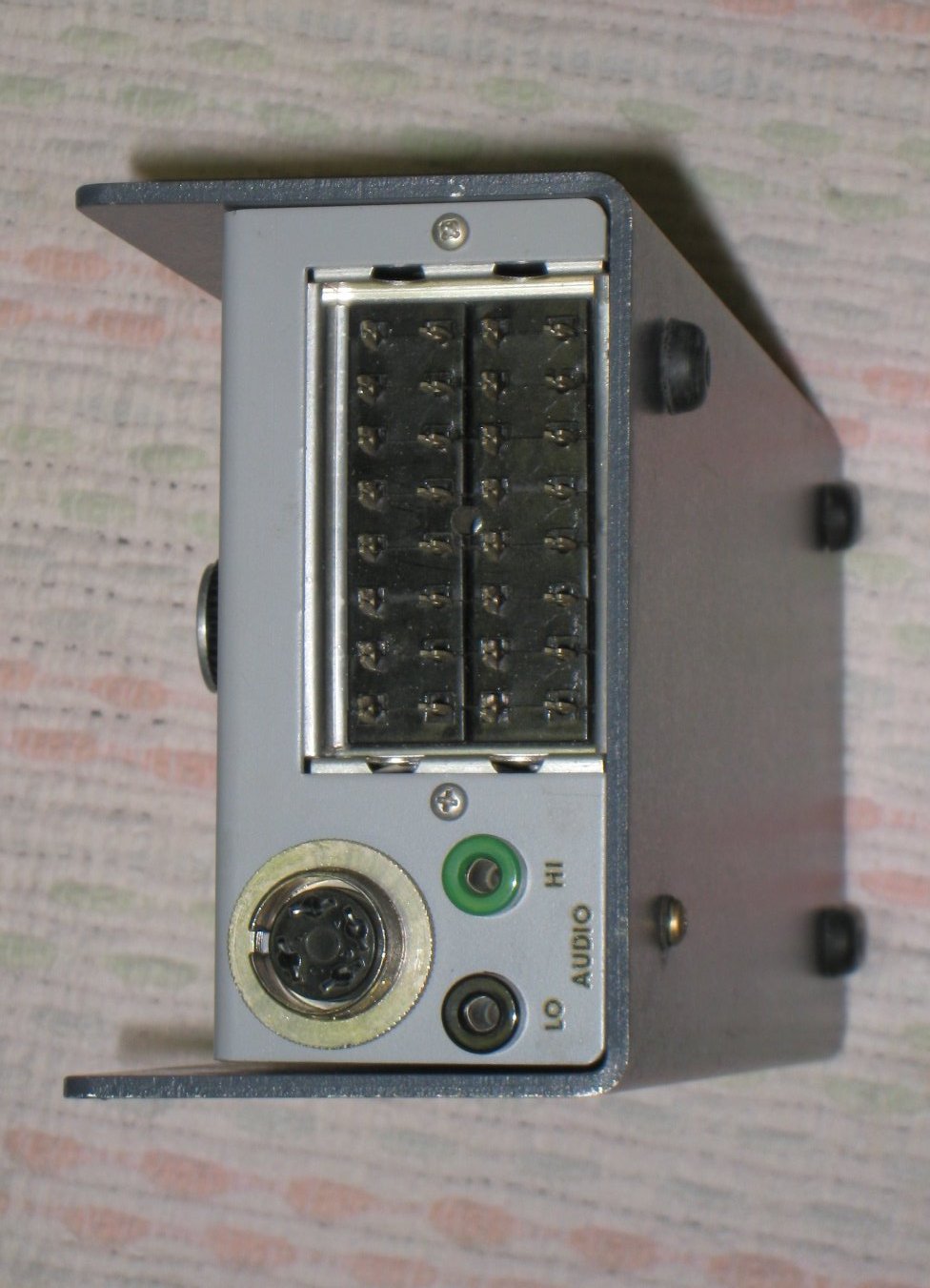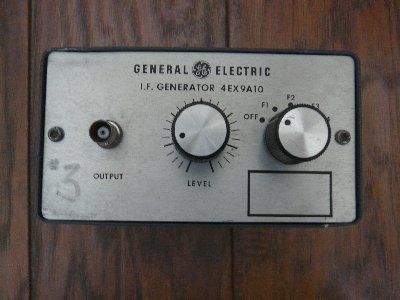Back to Home
and Tuning Tools

|
Up one level (GE Index) Back to Home |
GE Test Sets and Tuning Tools |

|
The GE Test Sets/Meters
Yes, you can tune up a radio with just a VOM, but after you get a chance to use a real
GE test set (or look over someone's shoulder as they use one) you will want one. The
same test set (with different cable kits, see below) can be used on MASTR IIs, Exec
IIs, Execs, MVPs, MASTR Pros, Deltas, RANGRs, PortaMobiles, and several other radio
series.


The 4EX3A11 test set A square-connector (MVP and MASTR II) microphone plugs into the left side of the test set, and the older round connector microphone plugs into the right side, as does the test cable to the radio. If you will be doing a lot of radio tuneup work it may prove valuable to hunt down a round mic connector and connect a foot switch with a 5 to 6 foot cable across the PTT and ground pins. You can have a MASTR II mic plugged into the square connector and the foot switch can be used to control the PTT leaving both hands free to twist the tuning tool and work the oscilloscope. If you are only going to test MASTR II, MASTR Executive II, or Custom MVP radios, then you can use the 4EX8K12 test set kit (LBI-4436) which came in a smaller box and with permanently-attached red and black test cables. The meter circuitry in the 4EX8K12 is identical to the meter circuitry in the 4EX3A10 or 4EX3A11. Eventually the red PTT button on either test set wears out and will need replacing. One common mod (while you have the housing open) is to add a SPST mini-toggle wired in parallel with the button. This allows you to use the red button for momentary PTT, and the switch when you want to key the transmitter for longer periods or when you need use both hands for something else. Both the Model 4EX3A10 test set (LBI-3491E) and the 4EX3A11 test set (LBI-4454B) have a connector on the side for the radio-specific cables. The three links in the text above will download the manuals for the 4EX3A10, 4EX3A11 and 4EX8K12 test sets. Additionally, here are the schematics for the 4EX3A10 and 4EX3A11 metering cables for
various radios:
All three test sets used a specially made analog meter calibrated as a negative 1/2 volt
to positive 3 volt movement, and the entire meter box was configured as a 20k-ohms-per-volt
voltmeter. There are two good reasons for this: In other words, YOU CANNOT USE A MODERN DVM TO PROPERLY TUNE A PRO, EXEC, EXEC II or MASTR II. Two additional "gotchas" are that most inexpensive DVMs go crazy in the presence of RF energy due to the fact that they are sold by price, so to make a profit the manufacturers scrimp on the shielding, and lastly, in every case you are tuning for a peak or a dip; attempting to do that with dancing numbers on a DVM is an exercise in frustration. You are constantly trying to determine if the new number is higher or lower than the last number and your brain can't keep up with the DVM display update rate. You NEED an analog needle meter to see the peak or dip (and some of the peaks and dips are way too small). I received an email that disagrees: I don't agree, in fact it's much easier for me to use my Fluke DMM to detect some of the very small meter peaks and dips. There is no rule or requirement the metering points have to be loaded by a 50uA movement.Interesting - My main portable DMM is a Fluke 73. But he makes a good point. Next time I'll use the DMM in parallel with the test set and try it. |
Other GE Alignment Units
 A photo of the assembled 4EX9A10 test set GE made a number of purpose-built alignment units. One of them is the 4EX9A10 multi-frequency IF generator shown above. See LBI-4129A for more information. |
Tuning Tools
|
A while back there was a question on the GE MASTR II mailing list about which tuning
tool(s) were the best for working on MASTR IIs and MVPs. Eric Lemmon WB6FLY responded
with: "All of the tuning adjustments on the MASTR II are handled by the MICOR
"Universal Tuning Tool" part number 6684387C01, priced at about $5.50 (in early 2007)
from Motorola Parts. This handy tool has a thin steel blade on one end that mates with
the ICOM and front-end capacitors, and both 0.075" and 0.100" hex drives on the other
end. Most coils on MASTR II radios require the 0.075" tool, but a few coils on the RF
assembly require the 0.100" tool. The body of the MICOR tuning tool is large enough to
get a good grip, making it easy to make very small adjustments. Overall, it's a must-have
tool !" Personally, I add a flap of tape right next to the handle. It makes counting turns much easier, plus it keeps the tool from rolling off the bench. Update: an email to repeater-builder advised us that two tools were purchased in early May of 2009 and cost US$19.82 (including shipping). Update: an email to repeater-builder advised us that two tools were purchased from Motorola On-Line (retail) in early October of 2019 and cost US$18.92 (not including shipping). They are available elsewhere for less. |

|
Up one level (GE index)
Back to Home
This page split from the GE Index page 19-Jul-2012.
This web page, this web site, the information presented in and on its pages and in these modifications and conversions is © Copyrighted 1995 and (date of last update) by Kevin Custer W3KKC and multiple originating authors. All Rights Reserved, including that of paper and web publication elsewhere.